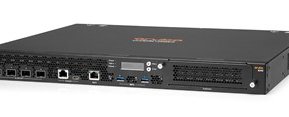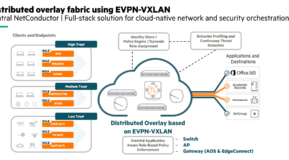Software Defined Networks (SDN) has grown out of Internet2, the not-for-profit academic, industry and government community collaborating on next generation networks, to better utilize network resources, offer enhancement of networking technologies and to avoid locking end users into a single vendor's vision and equipment. SDN opens up exciting new opportunities for datacenter and campus networks offering the promise of almost infinite flexibility in configuring and managing networks. Further, with centralized SDN controllers managing the infrastructure, deployment of new applications and associated resource allocation is highly simplified. In response to intense customer interest, every major networking vendor has embraced SDN and is moving forward with related development projects in one form or another. It is still early in the evolution of SDN and products are just now starting to come to the market. One of the most interesting questions is what IT managers can and will do with it. What is it that you want to use SDN for?
SDN leverages OpenFlow industry specifications offering the potential to manage the control plane for all the devices in your network. Without OpenFlow, deploying a new application in your network requires touching every switch, understanding the protocol and signaling method required, so you could set your firewall rules, quality of service and specific VLAN and physical interface resources appropriately. In a traditional, non-OpenFlow network missing any device or configuration parameter could risk successful deployment or adversely affect other applications. With SDN, it no longer matters which switch, what resources are required or what the risk is of breaking your existing network. You simply need to install this application on your SDN controller and it allocates the proper resources to allow this application to function.
SDN allows customers to create or obtain custom use applications that can be written to eliminate hazards to your network or route network traffic differently depending on the user and application needs. Bring Your Own Device (BYOD) applications can give the network administrator a more granular control over what resources these outside and personally owned devices can or cannot use as well as the same granularity to guest users that today require a deep packet inspection of traffic to achieve.
Of course, many of these applications could be done without SDN, but at a high cost of time and labor for the IT staff. It would require in-depth knowledge of the network and customized configuration by port or by switch. SDN adds flexibility, simplifies management and speeds implementation. The opportunities for SDN are almost unlimited. We see a number of exciting applications for it, including:
- Multi-tenancy: Simplifying security or resource allocation and allowing for much finer grain controls.
- Quality of Service (QoS): Allowing applications to dynamically set QoS standards. For example, a VoIP or Videoconferencing application to set high priority for users and establish flows between appropriate ports independent of where the users on connected on the network, whether connected via wire or wirelessly.
- Security: setting admission, access controls and resource allocation based on user identity.
Brocade has long been committed to supporting, and developing, open network standards – allowing for interoperability and integration are critical to our customers, and to our success. Brocade has recently joined in a strategic partnership with Aruba Networks to offer customers the best of wired and wireless network solutions with a long term shared vision with regard to SDN and open standards. While continuing our efforts in our respective strengths, in wired and wireless technologies, we are working on joint engineering projects to integrate our solutions, providing even greater value to customers. Work has already been completed on several cross-platform efforts such as using Aruba ClearPass and AirWave to manage Brocade switches and Brocade Network Advisor to manage Aruba wireless networks.
Brocade brings a robust history of early SDN development work to the partnership having worked closely with higher education institutions and the science networks as a member of Internet2 – a consortium of research universities that depend on Brocade MLX core routers with 100GbE backbone and OpenFlow support. Brocade has embraced SDN, and specifically OpenFlow, with its service provider solutions, bringing technologies to market that have been successfully deployed in the Science Network around the world. Within the next year, Brocade will have implemented OpenFlow v1.3 on most of its switches and routers, including those in the campus LAN family.
What applications would you like to see for SDN in the campus? How could SDN be applied in your network? Comment here to start the conversation with your peers. If you visit our booth at Airheads Atmosphere in Las Vegas March 12-14th we'll give you a $10 chip for the Cosmopolitan Casino to hear about your SDN use cases. (Limited to the first 50 contributions).




